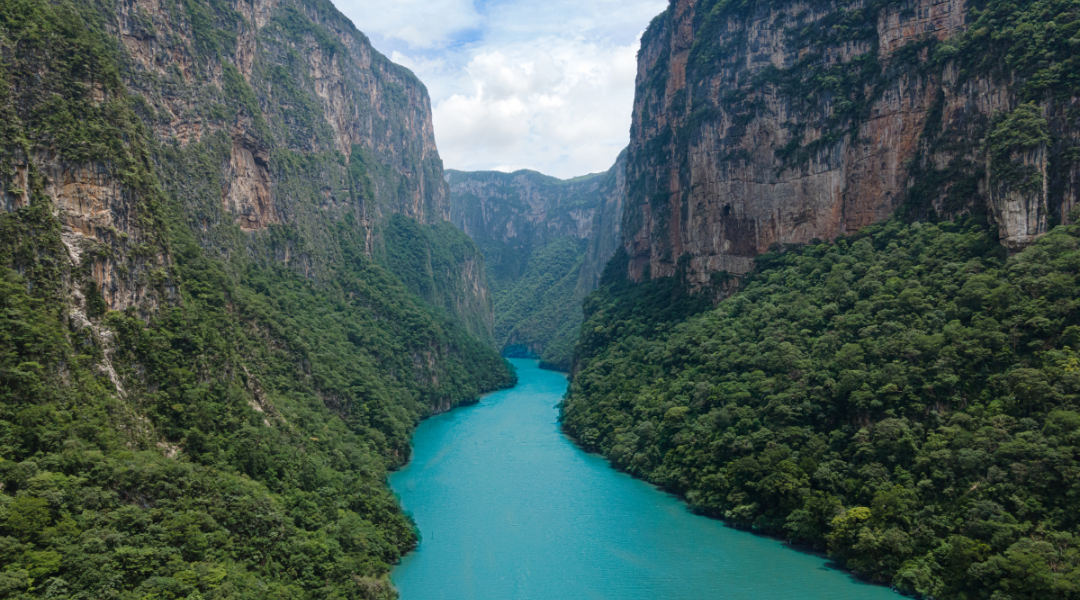Article by Enrique Lendo originally published in Reforma News
Heatwaves, wildfires and droughts
We are facing heatwaves in most of regions Mexico with temperatures surpassing 40°C in over 20 states. Last week, 400 wildfires devastated Canada’s southwest with the smoke traveling to northern US and causing the worst air quality in New York City since this indicator was first recorded in 1999. Particles of 2.5 microns reached 460 parts per million, 13 time above the standard recommended by the US Environmental Protection Agency as safe.
Experts conclude that wildfires and heatwaves are the result of unusual droughts induced by “El Niño” but exacerbated by climate change. It is ironic that New York City, the financial center, and icon of corporate America’s capitalism, is so vulnerable to its impacts. In 2021, hurricane ida claimed 13 lives and resulted in $9 billion of dollars in damages to new yorkers. The truth is that climate change impacts have been increasing in frequency and intensity and, today, half of the world’s populations is vulnerable to its hazards, according to the Intergovernmental Panel on Climate Change (IPCC).
Paris Agreement commitments
With the recommendations of the IPCC, in 2015, over 190 countries committed, in the Paris Agreement, to stabilize the increase of temperature in 1.5°C by the end of the century. This target will only be reached if global emissions are halved by 2030 and net zero by 2050. According to the IPCC previous calculations, the planet would be reaching the 1.5°C threshold by the middle of next decade. However, a few weeks ago, the World Meteorological Organization surprised us with the announcement that the critical threshold will be reached sometime between 2023 and 2027, due to the increase in CO2 emissions over the past 3 years. The temperature increase has already reached 1.1°C, imagine a 1.5°C world.
In the period from the adoption of the Paris Agreement until now, many governments and large companies have announced their commitments to net zero emission by 2050 with fanfares. But it is easer said than done. According to Climate Action Tracker, while 84% of global emissions today have a net zero target, 74% of these targets are inadequate.
The main problem is that many companies and government commit to carbon neutrality but only a few of them flags how they will reach it, and when they do, their strategy is flawed or misleading. Only a handful of countries have integrated credible strategies to reduce their emissions 50% by 2030, and only 81 out of the 18,000 companies surveyed by the Carbon Disclosure Project in 2022 had adequate climate transition plans.
Climate transition plans: essential
A climate transition plan is a time-bound action plan that clearly outlines how a company will achieve its strategy to pivot its existing assets, operations and entire business model towards a trajectory that aligns with the latest and most ambitious climate science recommendations, i.e., halving greenhouse gas (GHG) emissions by 2030 and reaching net-zero by 2050, thereby limiting global warming to 1.5°C. For a climate transition plan to be credible, it must:
- Be based on a climate scenario methodology
- Set feasible science-based targets
- Establish a responsive governance structure
- Advance precise actions to reduce emissions
- Leverage a finance package to assure its implementation

Source: CDP
More and more, regulators, investors, consumers, and citizens are demanding companies to adopt climate transition plans and penalizing greenwashing. It is a matter of time, for inexistent, uncredible or flawed plans to start having an impact on the income, revenue, reputation and competitiveness of companies and countries.
A few days ago, the European Union Parliament approved a regulation to make climate transition plans mandatory for companies along the supply chain. The new rules initially apply to companies with over 500 employees and more than €150 million in revenues, extending later to companies with over 250 employees and €40 million revenue. Non-EU companies with revenues earned in the EU above the thresholds would also be required to follow the rules. The United States, Canada and other industrialized countries are also considering similar approaches. When entering into force, these regulations will have an impact on exports and investments flows of Mexico and other emerging economies.
Countries and companies in Latin America should not delay the adoption of solid climate transition plans.





